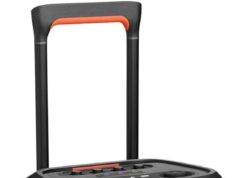
There’s a difference between cleaning and decluttering. If you have too much stuff (clutter), you’ll have a much harder time sweeping, dusting, sanitizing, and actually cleaning. But decluttering is hard. It’s overwhelming, even, which is why clutter can get out of hand, making cleaning a nearly impossible task. That’s also why we’re always on the hunt for new ways to declutter: Surely, someone out there has cracked the code, right? As it turns out, organizer Kayleen Kelly may have. Her method, Core 4, could be the one that works for you.
What is Core 4?
Kelly’s Core 4 cleaning method is a big hit on TikTok, with one analysis by Upmove showing videos on the technique have amassed over 23 million views. Here’s the video that launched it all:
When decluttering, Kelly suggests moving through each room in four stages: Clear out, categorize, cut out, and contain.
How to use Core 4 to declutter
If you want to try Core 4 on your own, Kelly advises starting with small areas to avoid getting overwhelmed. Instead of trying to do each stage through your entire home at once, do all four stages in one room, then repeat that process in each room. If a single room has a ton of stuff in it, you can divvy that up even smaller, focusing first on a closet or the counter space, for example.
Clear out
Start the first phase, which is clear out, by just removing everything and putting it in a pile. Throw out trash if you see it, but focus on getting your cupboards, table space, and other storage areas completely clear, so they can be filled up in a more organized way later.
Categorize
Next, categorize. You’ll need sorting bins for this (more on that later), so designate a bin for all the different categories of stuff you’re moving through, like your clothes, a family member’s clothes, makeup, knick-knacks, pet products, etc. Start sorting your pile by putting every item into its associated bin.
Cut out
The third phase is cut out. This one is difficult because you’ll be tasked with going through each bin and determining what can be thrown away or donated. This is a good time to practice putting your clutter in “purgatory,” or moving things you’re unsure about getting rid of to a special bin that you’ll hide away somewhere, like an attic, for a month to determine if you can live without it. Otherwise, be decisive and do your best to shrink the amount of stuff in each bin.
Contain
Finally, contain. Reassess your bin situation. If you threw out a bunch of old kitchen tools, you might be able to put the remaining ones in a smaller container, for instance. The bins are key here and you’ll be using them for storage and organizing going forward, not just for sorting and decluttering when you’re working through the steps.
Bins for the job
It might seem counterintuitive to buy more stuff to declutter, but to use this method, you really do need the bins. They make sorting easy, plus give you a place to store the things you decide to keep, helping you stay organized so you don’t have to keep repeating the Core 4 all the time. Here are a few bin options to consider:
Classic storage bins
If you’re focusing on pure functionality, nothing is better for this job than clear, plastic containers with lids. They nest and stack, so whether they’re empty or full, storing them is easy and intuitive. Try the IRIS bins from Amazon, which come in a six-pack of 53-quart bins ($79.99) for larger items or categories and a 20-pack of 5.9-quart bins ($28.99) for smaller needs.
Decorative storage bins
If you live in a small space where the bins are more likely to be visible or you just prioritize aesthetics, you can still make Core 4 work for you by selecting more decorative bins. Your best bet is to buy sets of matching boxes, like this small and large box set on Wayfair for $74.99, which comes in seven colors. Collapsible fabric boxes, like this set of three from Amazon ($29.95) are good options, too, since they can be folded up when not in use.








